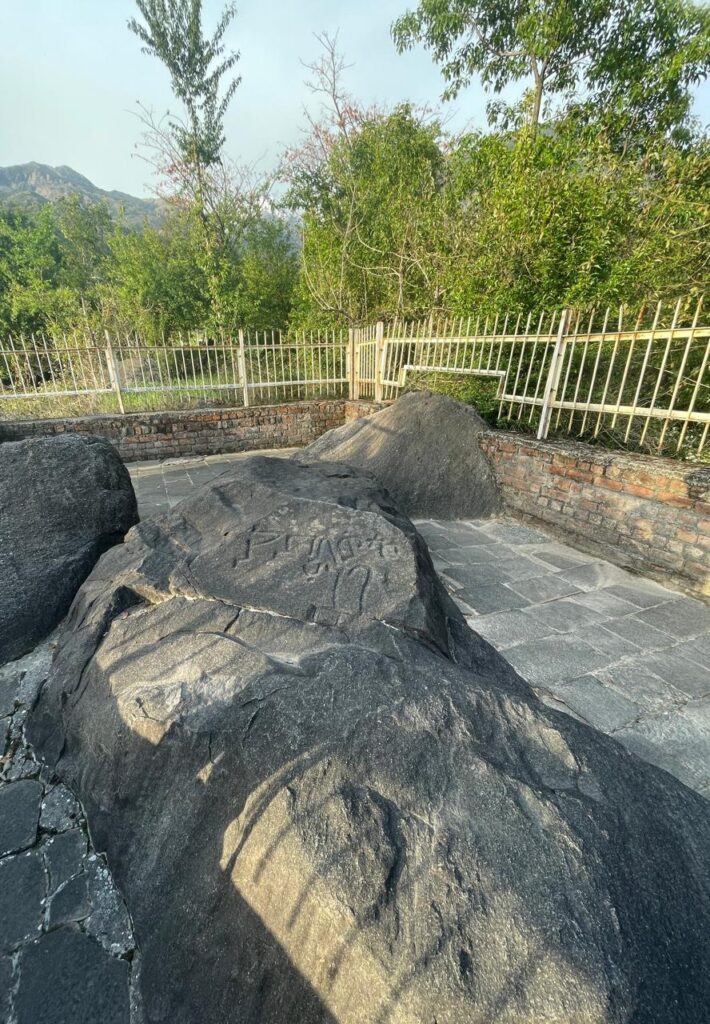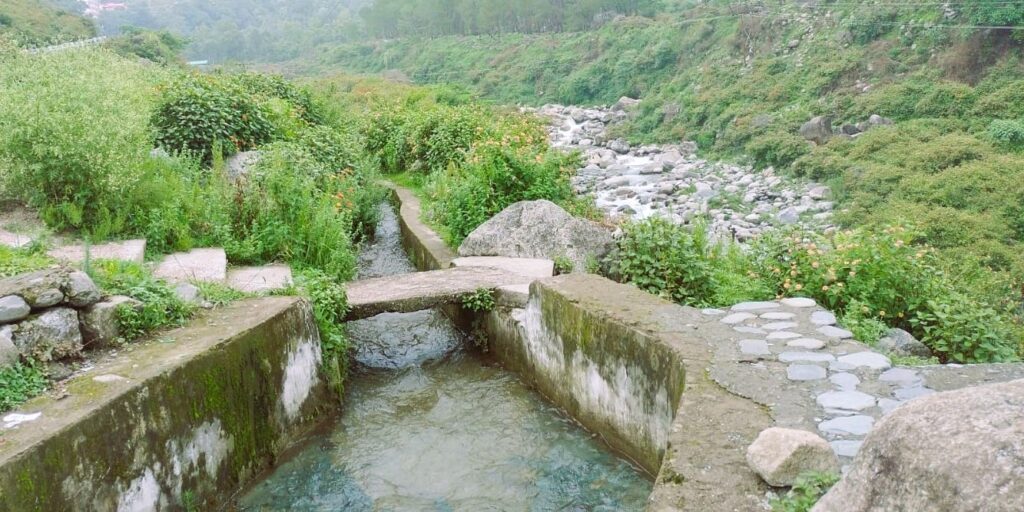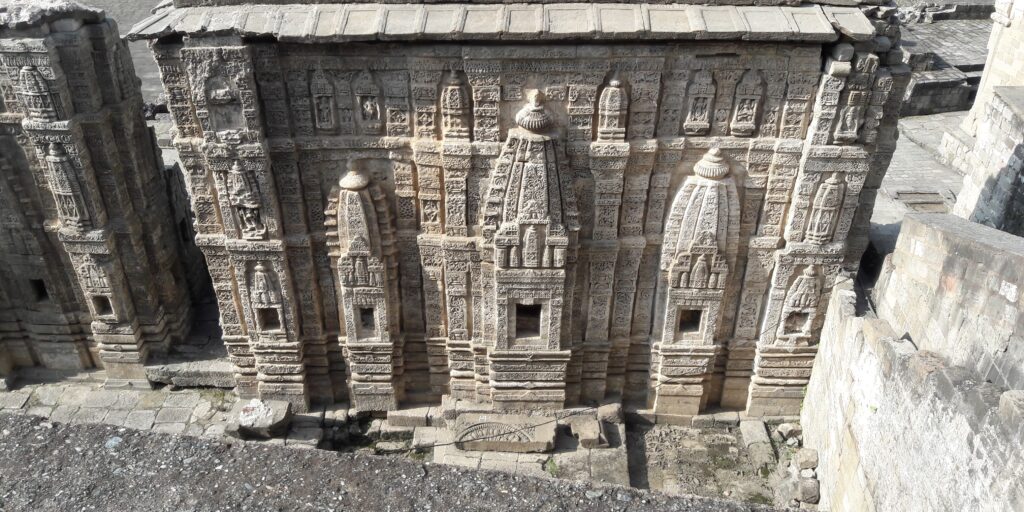The Kanihara rock inscriptions, located in the captivating Kangra Valley of Himachal Pradesh, provide a captivating glimpse into the ancient history of the region. These inscriptions, also referred to as Khanyara or Kanhiara inscriptions, hold immense significance for historians, linguists, and those intrigued by the cultural heritage of India. Dating back to the 1st to 2nd century CE, these ancient artifacts play a crucial role in understanding the rich ancient Indian culture.
What Are the Kanihara Rock Inscriptions?
The Kanihara rock inscriptions consist of two lines, each written in a distinct ancient Indian script. The first line is inscribed in Kharoshthi, an ancient script used in northwestern India, while the second line uses Brahmi, a script foundational to several Indian writing systems. Both inscriptions convey a similar message but with a key difference.
Kharoshthi Script: The inscription reads “Krishamyasasa arama.”
Brahmi Script: The inscription says “Krishnayasasya arama medangisya.”
When translated, both inscriptions essentially mean “the garden of Krishnayasas.” The Brahmi version includes an additional term “medangisya,” which translates to “fat body.” This extra word has sparked significant scholarly debate.

The Extra Word and Its Implications
The term “medangisya” in the Brahmi inscription is unusual and may have been an inadvertent addition or even graffiti. The term “arama,” present in both inscriptions, has been interpreted in various ways. While Indologists such as Cunningham suggested it meant “monastery,” this theory is now contested. Archaeological excavations in the Kangra Valley have not revealed any monasteries like those found in regions such as Uttar Pradesh, Bihar, Odisha, and Nepal.
Current scholarly consensus leans towards interpreting “arama” as “garden,” a view supported by comparisons with the nearby Pathiar rock inscriptions, which also use Kharoshthi and Brahmi scripts and suggest the notion of a garden.
Cultural Significance of the Kanihara Rock Inscriptions
The Kanihara rock inscriptions are more than ancient texts; they reflect the cultural and communal practices of early India. They offer insights into community gardens, which were likely important for relaxation and social gatherings, indicating a sophisticated society with organized communal spaces.
Preservation and Public Display
A replica of the Kanihara rock inscriptions is displayed at the Kangra Fort Museum. This museum provides visitors with an opportunity to explore the rich heritage of Himachal Pradesh and delve into the region’s ancient past.
The Kanihara rock inscriptions hold great significance in preserving the heritage of ancient Indian civilization. They provide an intriguing window into the practices of the past, encompassing history, language, and culture. To gain deeper insights into these ancient Indian inscriptions and their context, one can visit local museums or engage in scholarly research. Alongside nearby inscriptions such as the Pathiar rock inscriptions, the Kanihara rock inscriptions continue to captivate and inspire those delving into India’s abundant historical narrative.
Limited information can be found online regarding the Khanihara rock inscriptions. Only one scarce article by Ms. Sarah Welch (Read Article) could be located. To gain further insights into ancient Indian inscriptions and their importance, consider exploring local heritage sites and academic resources that explore early Indian scripts and historical contexts. For some more historical facts about Dharamshala read – Historical Landmarks of Dharamshala: A Walk Through Time





